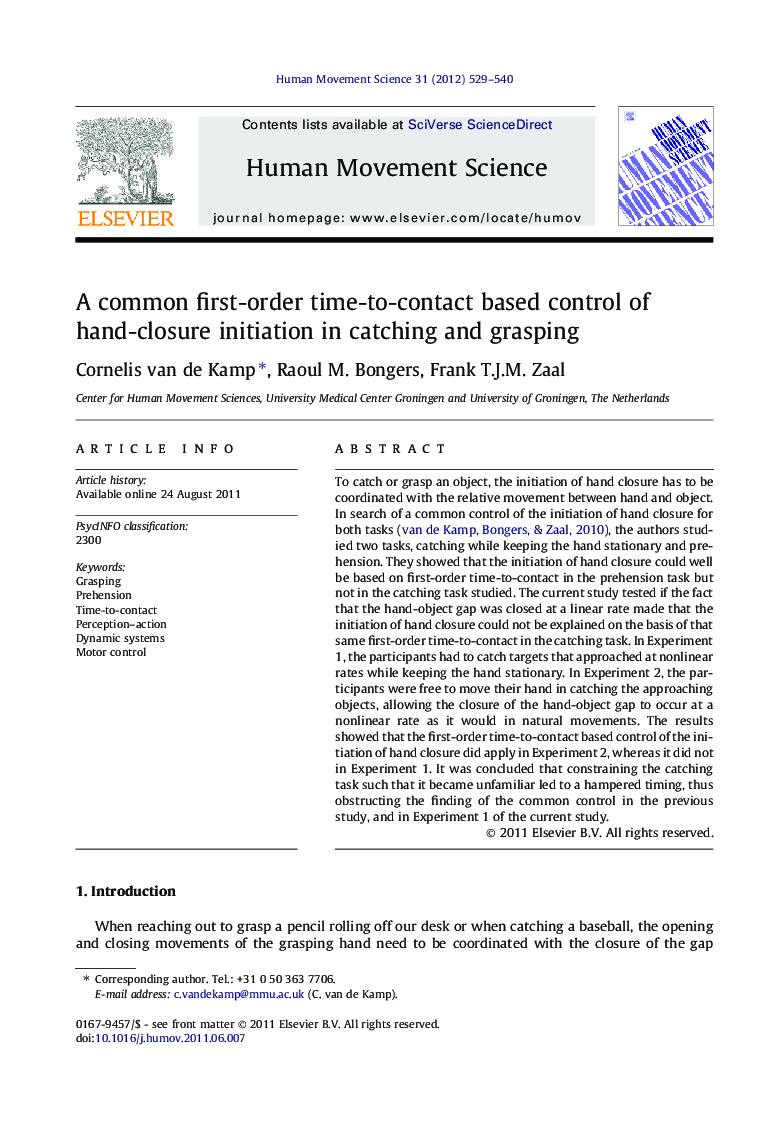| Article ID | Journal | Published Year | Pages | File Type |
|---|---|---|---|---|
| 928441 | Human Movement Science | 2012 | 12 Pages |
To catch or grasp an object, the initiation of hand closure has to be coordinated with the relative movement between hand and object. In search of a common control of the initiation of hand closure for both tasks (van de Kamp, Bongers, & Zaal, 2010), the authors studied two tasks, catching while keeping the hand stationary and prehension. They showed that the initiation of hand closure could well be based on first-order time-to-contact in the prehension task but not in the catching task studied. The current study tested if the fact that the hand-object gap was closed at a linear rate made that the initiation of hand closure could not be explained on the basis of that same first-order time-to-contact in the catching task. In Experiment 1, the participants had to catch targets that approached at nonlinear rates while keeping the hand stationary. In Experiment 2, the participants were free to move their hand in catching the approaching objects, allowing the closure of the hand-object gap to occur at a nonlinear rate as it would in natural movements. The results showed that the first-order time-to-contact based control of the initiation of hand closure did apply in Experiment 2, whereas it did not in Experiment 1. It was concluded that constraining the catching task such that it became unfamiliar led to a hampered timing, thus obstructing the finding of the common control in the previous study, and in Experiment 1 of the current study.
► We revisit a previously proposed model of hand closure initiation. ► In Exp 1, targets approached at a nonlinear rates while the hand remained stationary. ► In Exp 2, participants were free to move the hand when catching objects. ► Results show that the model did apply in Exp 2 whereas it did not in Exp 1. ► constraining the catching task obstructed the proposed model.
